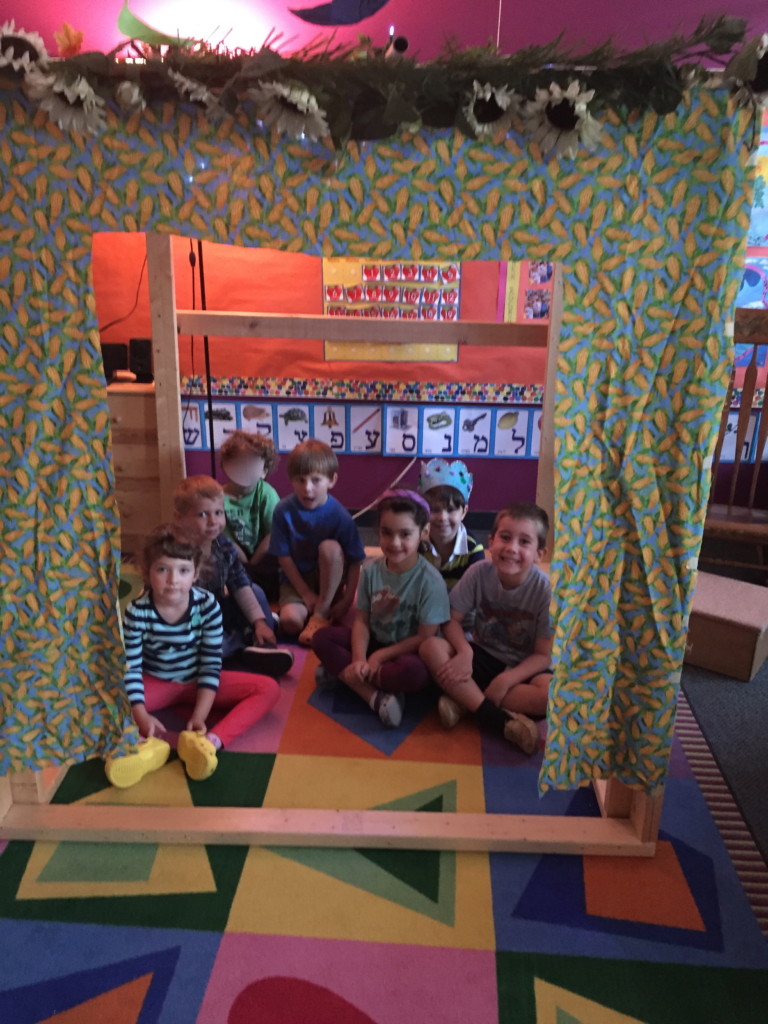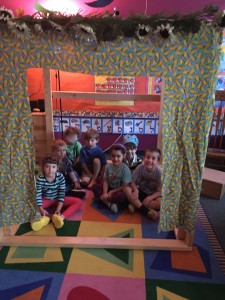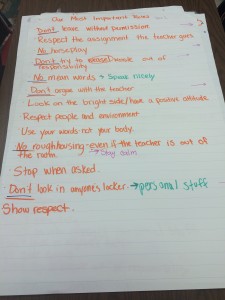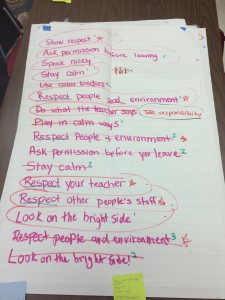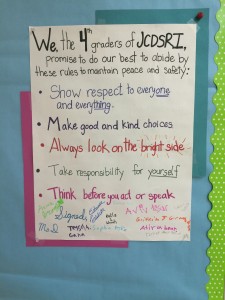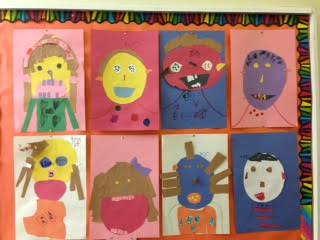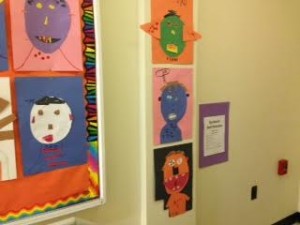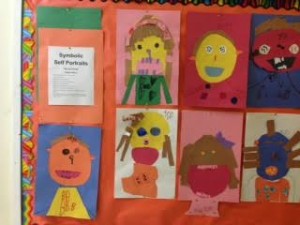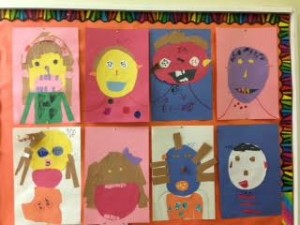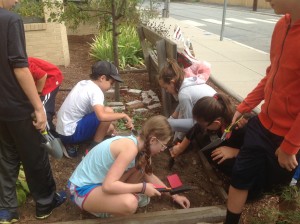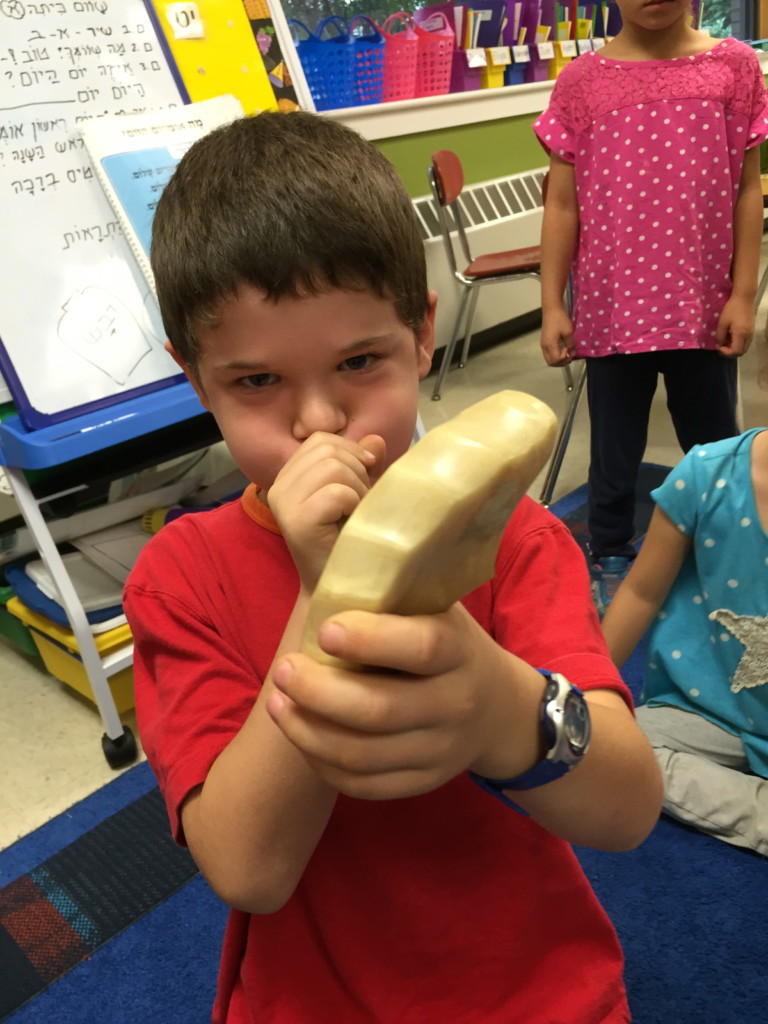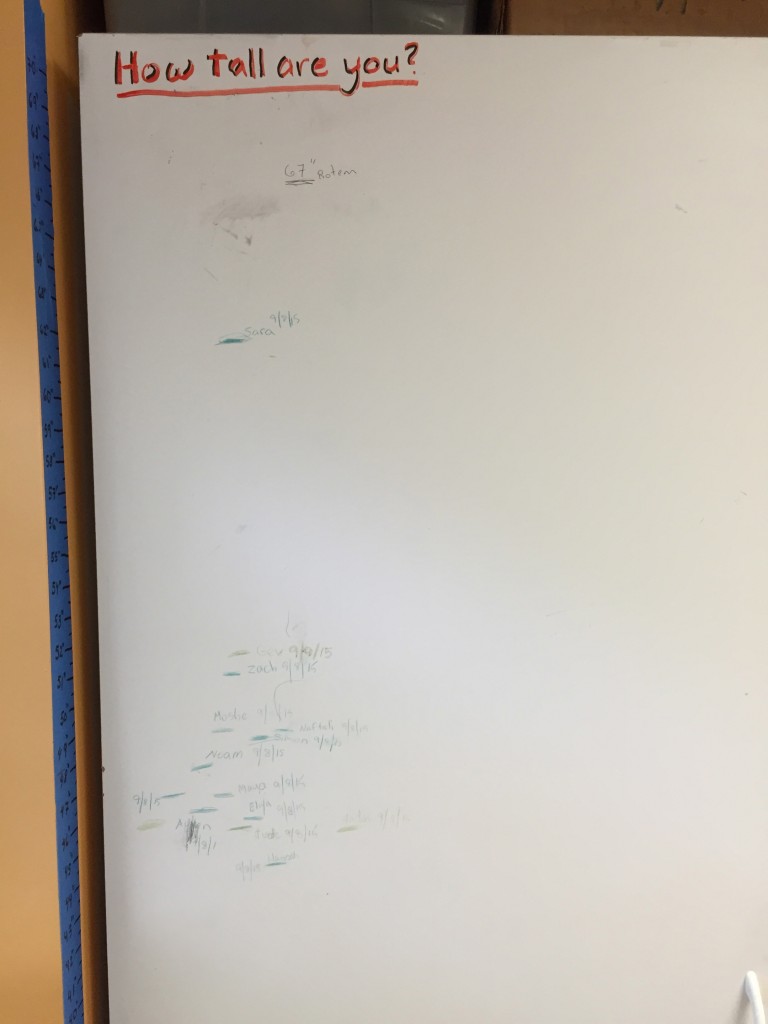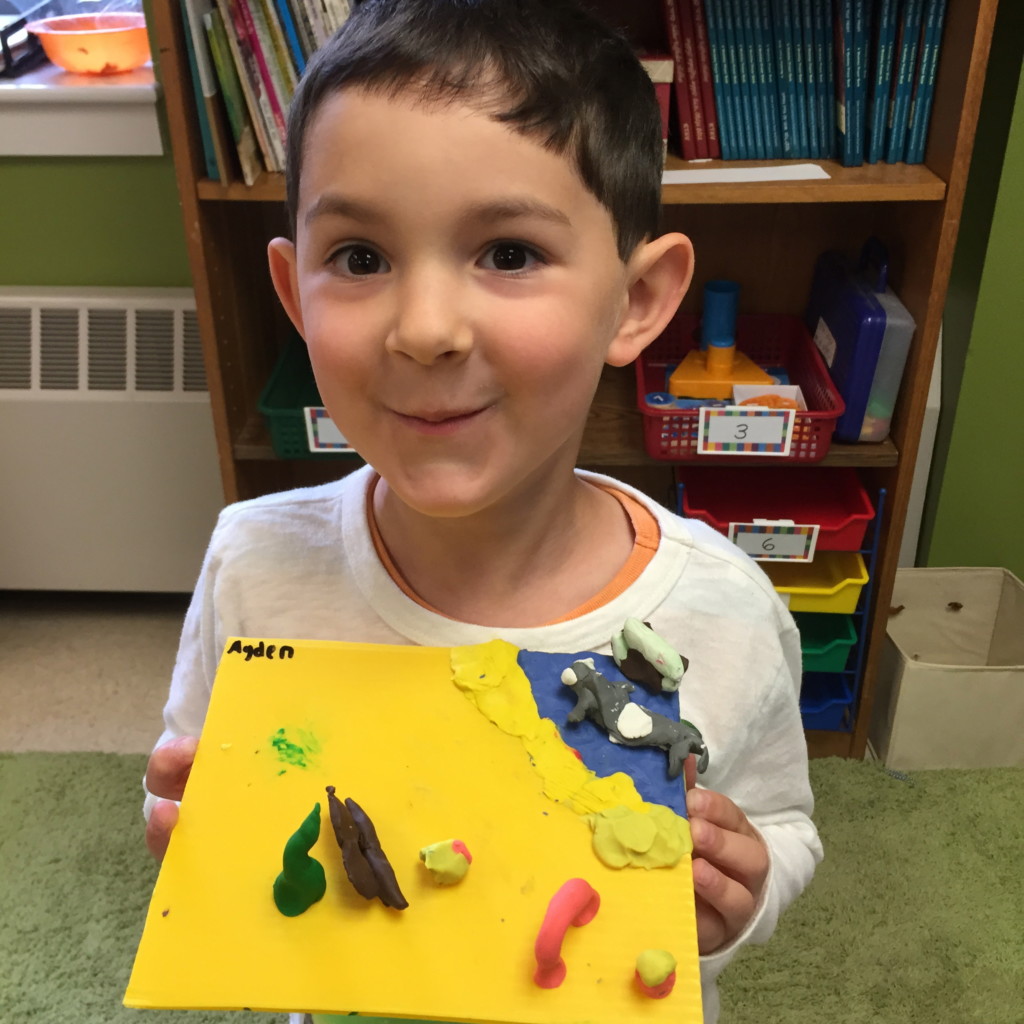As a mother and a teacher, I have always tried to get my students and my own son to eat healthful foods. At my own house this summer, I realized my son would eat anything I grew in my garden! The same thing happened this year at school. Second, third, and fourth graders have been busy harvesting many different vegetables from our school garden. Each grade then made something yummy to eat from the garden. Second grade enjoyed getting their hands dirty, then making and eating kale chips. Fourth grade harvested peppers, wax beans, tomatoes, and kale to make a salad bar. Third grade had the privilege of working on many different garden beds one whole Friday afternoon, helping the youngest students’ gardens which needed a lot of weeding. Then they were able to enjoy kale chips and kale smoothies! All the grades enjoyed cooking and eating their vegetables. Most remarked how fresh vegetables from the garden were tastier than from a grocery store, and more fun!
Month: September 2015
The Time of Our Rejoicing!
Our community has discovered the joy of preparing for Sukkot – “the festival of booths”! Laden with screws, hard-hats, and a power drill, we’ve constructed a (very!) temporary dwelling in our classroom in honor of the holiday and decorated it with paper chains, leaves, and lights. We have already snuggled together under its roof, pretending to count the many stars or seek shelter from the (much needed) rain. During Sukkot our kehillah (community) has the opportunity to enter into another realm – one that compels us to refocus beyond the material (and usually temporary) “structures” of our lives and concentrate on our values: that of honoring our community, respecting nature, practicing hachnasat orchim (welcoming guests), and expressing gratitude. The holiday is also called zeman simchateiun – the time of our rejoicing – and we wish everyone a happy and meaningful Sukkot!
Pondering a Pond
As summer lingered beautifully, our Kindergarten class took advantage of the great weather by exploring a local pond. For the trip, we put on our scientist hats and observed and wondered about the life around us. We used our 5 senses to notice many interesting things. This week we especially focused on using our eyes and ears. We heard and saw many birds, for example. We saw frogs jumping in the water. We heard acorns plopping on the ground from the trees. From our observations we began asking questions. Some of our wonderings included:
“Why are the frogs out everyday and when it’s winter what will the frogs do?”
“Why are the white flowers next to the bench so small?”
In our class, we embrace curiosity and we are excited to have more adventures outdoors, as we explore the pond throughout the year.
4th Grade Rules!
We did it! This week, fourth graders finished creating the rules that will help our community work this year! The students took on an intensive process to create rules that would keep them safe and give them the freedom to learn. Before we began our work, we talked about the role of rules and guidelines in our world. Many students shared that rules help keep our bodies and our feelings cared for and safe. We thought about rules we’ve had in the past, rules we’ve liked, and rules we think are important (even if we don’t like them) and brainstormed a long list.
We decided that such a large number of rules isn’t useful. How will we remember what we should do if we can’t remember all of our rules? To narrow down our choices, each student picked one or two “most important” rules, and we charted our ideas again.
This was still too many for us to remember! We also noticed that many started with “No” and “Don’t”. We talked about how telling someone not to do something can make someone want to do that thing even more. We also talked about the importance of a positive attitude and decided we wanted rules that reflected our desire to “look on the bright side of life”. We talked about how we might flip this language to make it more positive. After we changed our wording, students picked their most important rules for the last time and charted again!
We noticed that many people picked the same rules, which told us that our community valued these ideas, like respecting others and staying calm. We also noticed a theme of respect running through many of the suggested rules. After another conversation we synthesized our ideas and crossed out the duplicates. This got us so much closer to our final list! When we had five or six clearly worded ideas, we took a vote.
For a rule to pass the vote it had to be approved by every member of our kehilah (community). The rules you see below were approved by every 4th grader. Each student was asked to read the rules below out loud with the group. Then we all took two minutes to think about the words we were saying and the promise we were about to make. When we were ready to commit ourselves to upholding these rules, we each signed our names as a sign of our promise. I am glad to say that every 4th grader has promised to promote the guidelines they created for the community we are forming together.
This was not an easy or a quick process, but the reflection and conversation that came out of this process is invaluable. We hope that we will find that our rules matter more to us because they were written by us and for us. We hope our rules will feel clear, relevant, and will help us feel safe and loved in our classroom.
Second Grade Rocks!
*Check out how unique and special we are in the second grade! Can you guess who is who? Check out our Symbolic Self Portraits!
No Difference-
Small as a peanut,
Big as a giant,
We’re all the same size
When we turn off the light
Rich as a sultan,
Poor as a mite,
We’re all worth the same
When we turn off the light.
Red, black or orange,
Yellow or white,
We all look the same
When we turn off the light.
So maybe the way
To make everything right
Is for God to just reach out
And turn off the light!
We are learning about so many fascinating things in the second grade! Ask your child about any of the following concepts/topics:
- Around the World
- The Thing About Georgie
- Exploring New Places
- Space Exploration
- Bugsy and Gizmo (our classroom pets)
- Stations in the Classroom
- The Colors of Our Voice
- Time Capsule
- Kale Chips and Garden Ideas
- Classroom Jobs
- Second Grade Stars
- JCDS ROCKS
New Rituals for Forgiveness
The fifth grade class has spent a lot of time looking at the types of wrongdoings listed in the ‘Al Het’ prayer, which is prayed during Yom Kippur. We noticed that a quite a number focus on communication (ask your child what percentage of wrongdoings are connected to our speech!). We also explored the idea that one can sin against God, against another and against oneself. As part of this, the students asked forgiveness by writing letters to each of these. They planned on giving the letters to the others, but the question arose as to what to do with the letters to God. After some discussion, we decided that it would be a meaningful ritual to bury the notes and then plant bulbs on top of them. In that way, something positive can grow out of a negative action, and we are giving back to God by planting beautiful flowers. In these pictures, the students are planting either their tulip or daffodil bulb.
An Appetite for Failure
As teachers and parents, we spend most of our time helping children succeed. We support them, give them work that is challenging (but not too challenging), and if they fall, we are there to jump in and catch them before they hit the ground. Often, when students fail, they cry – and we feel terrible. We wonder, “what could I have done to teach the material better, to communicate their homework more clearly, or to give them more time or resources so this failure could have been avoided?”
But I wonder if we are doing children a favor in this regard. Take a break for a moment and check out this video produced by my creative heroes, OK GO. This isn’t my favorite OK GO video to watch, but what what I love about this video is the effort that went into creating it. In fact, there are many videos on the making of the video. In one of those, Damian Kulash, the lead singer of OK GO, talks about what he wanted from the video: “Hopefully it’s like, right on the edge of do-able. Hopefully we won’t nail it once and say, ‘aw, we could have made it better!’”
To me, this is a profound statement about vision. Vision is about seeing the long distance of what might be. It’s not about doing what’s already been done or making incremental changes or improvement. Vision is big and almost impossible. As such, one has to have an appetite for failure. For example, in the outtakes of the video above, one can see that it took them at least 215 takes before they finally got their shot. They knew going into it that they were going to fail their way to success.
A classic example of this “appetite for failure” comes from Thomas Edison, who, when asked about his trials and tribulations while attempting to invent the lightbulb, is widely quoted as saying, “I have not failed. I have successfully found 10,000 ways that will not work!”
I know I have had my failures, and I know how important persistence is on a personal level. But I can’t remember when I tried doing anything 215 times without giving up. I wonder how my life might be different if I had that kind of persistence. Would I be able to fix my own computer problems? Could I rehab my own house? Could I have written that screenplay I dabbled with? Would I love playing basketball? Would I be a rocking guitarist? I imagine being a happier, more successful person – not from being more talented, taller, or richer, but by being the kind of person who has a higher tolerance for failure.
One’s ability to face failure over and over again and proceed with faith, vigor, and vision is called persistence. Calvin Coolidge once said, “Nothing in the world can take the place of persistence. Talent will not: nothing is more common than unsuccessful men with talent. Genius will not; unrewarded genius is almost a proverb. Education will not: the world is full of educated derelicts. Persistence and determination alone are omnipotent.”
Are we as parents and educators allowing students to come up with ideas that are “on the edge of do-able?” Are we allowing our students to pursue them doggedly – allowing them to fail over and over again on their way to success? Are we pursuing the changes we want in our organizations and communities with an appetite for failure, or are our own discomfort, impatience, and aversion to struggle impeding our abilities to change and grow? While we hyper-focus on giving kids the tools for success, are we offering them critical opportunities to learn from failure?
First Grade Shofar Blowers
We rang in the New Year to the blast of a Shofar. For some of our students, it was their first time!
We counted pomegranate seeds! The final amount was 703 exactly. (I say exactly because we even counted the stray seeds that found their way to the floor.)
Each student was given a segment of the pomegranate to count, then had to record the data. It was hard work to add up all the data, but it was worth it. The pomegranate symbolically represents the 613 Mitzvot (good deeds) that we are expected to fulfill. There is actually research that supports this theory.
http://parsha.blogspot.com/2007/09/613-seeds-in-pomegranate.html
We measured ourselves. It will be interesting to see how tall they will be at the end of the year.
We are learning our first song for the Zimriyah which happens to be about wishing our loved ones Shana Tova! (Happy New Year!)
What a wonderful way to begin the New year!
News from the Gym… and Mrs. Sugerman
We are off to a fabulous start to our new school year,
Below are some exciting highlights, in case you didn’t hear.
Pre K loves playing with whatever equipment we put out,
But shooting baskets is their favorite… we have no doubt.
Fruit basket, switch and soccer bowling are just some of the games played by Kindergarten and Grade 1,
They are learning to play cooperatively while having so much fun.
For Grades 2-5 it’s been mostly about games played with bases,
Plus a game of crab soccer and a class of relay races.
Be sure to check in with your child(ren) if you want to learn more,
About all their action-packed experiences from the gym floor.
Jonah Is Really A First Grader
The story of Jonah and the whale is traditionally read during the afternoon service of Yom Kippur. The choices Jonah made remind me of many age-developmental traits of a first grader. What a wonderful story full of imagery and important messages!
Our story begins with Jonah running in the opposite direction when God asked him to deliver a message of dire consequences to the people of Nineveh. Jonah buys a ticket to sail away, far from his responsibilities. Perhaps Jonah felt that the task was too hard for him? Sometimes, it is hard to follow directions, especially when you are not sure that you will be successful.
Then, God sends an enormous storm to rage against the boat. The captain finds Jonah asleep and shakes him awake. Ever try to wake an exhausted first grader? – not an easy task! Jonah tells the sailors to throw him overboard because he is the cause of the storm. The sailors are appalled but do as he says.
The sea instantly becomes calm again. God sends a whale to swallow our friend Jonah. Jonah is in the whale for 3 days. Jonah understands the error of his ways, prays and promises to do his job. Jonah is spit out onto the shore near the town of Nineveh.
God reminds Jonah of his responsibilities and this time, Jonah chooses to do as he is told. In the town, he delivers his message and is shocked and annoyed that, since the king and the townspeople are truly sorry for their behavior, God forgives them. Jonah walks away furious and sits on a bench outside of the city. Perhaps Jonah is thinking, “It is not fair! Why did I get punished for 3 days, and they didn’t get punished at all!”
God grows a vine which provides shade for Jonah. His rage slowly disappears, as he is happy to be out of the hot sun. The next day, God sends a worm to eat the vine. Jonah is miserably hot again. He is on full sensory overload.
God points out that Jonah seems to be more upset about the loss of his shade than the destruction of an entire town of people. God reminds Jonah that the people of Nineveh “didn’t know their right from their left” and were truly sorry by showing their repentance through their actions.
We call this T’shuvah in Judaism. Teshuvah is what we do to “fix our mistakes.” Yom Kippur is about second chances, asking for forgiveness and meaning it. Everyone makes mistakes, just like Jonah and the people of Nineveh. God gave them another chance to try again to make good choices. Being a first grader can sometimes be hard, but these social and emotional developments are part of the whole wonderful package that are our six and seven year old children.
Here’s to second chances, beginning the New Year with a clean slate and joy in our hearts.
גמר חתימה טובה
(May you be inscribed (in the Book of Life) for Good)
